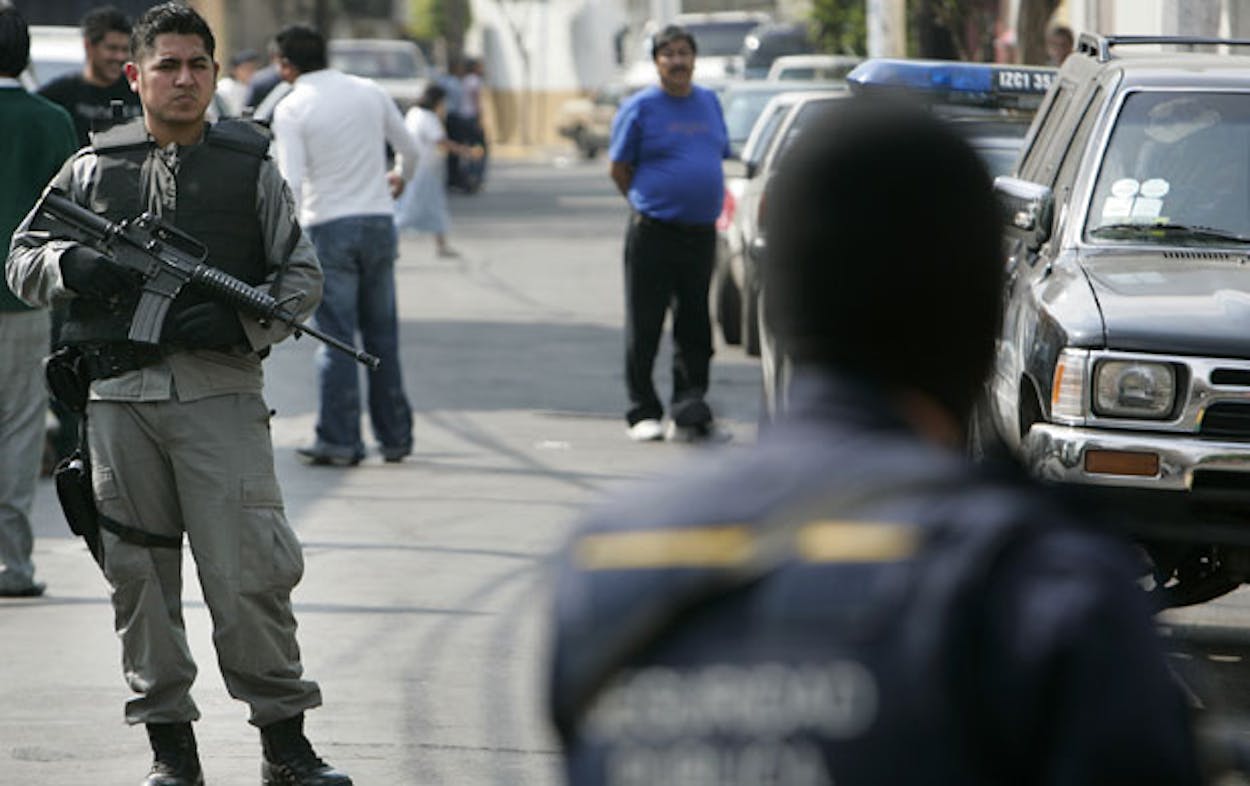Are the U.S. Department of State and Texas officials in league to snatch away tourists from Mexico? Well, that’s what Chihuahua Governor César Duarte, who is upset about the way his turf was described by the U.S. federal government, seems to think.
The U.S. government’s description came last Tuesday, in the form of the State Department’s update of its February 2012 Mexico travel warning. The warning, USA Today reported, gets “more specific about what to worry about where.”
At Fronteras, Michel Marizco made note of the timing: the update came just a week before President Barack Obama will meet with Enrique Peña Nieto, Mexico’s President elect (who will be inaugurated on December 1).
The State Department warning applies to all of Mexico, but also helpfully provides a state-by-state breakdown of conditions. U.S. Citizens are specifically warned to “defer non-essential travel” to all four Mexican states bordering Texas–Chihuahua, Coahuila, Nuevo Leon, and Tampalupas.
“The situation in the state of Chihuahua, specifically Ciudad Juarez and Chihuahua City, is of special concern,” the warning notes, adding that while Juárez’s murder rate dropped from 3,100 in 2010 to 1,933 last year, the city “still has one of the highest homicide rates in Mexico.”
Duarte saw something more sinister in the State Department’s warning about Juárez, calling it a “tourist strategy by Texas,” according to Lorena Figueroa of the El Paso Times. “It is part of the promotion that Texas is doing to disqualify its competitors, like Chihuahua in this case,” he said. (Perhaps he is not aware of Texas Attorney General Greg Abbott’s, um, strained relationship with the federal government.)
But Travel Warnings aren’t sent out on behalf of a particular tourism bureau. Instead, according to the State Department’s website, “Travel Warnings are issued when long-term, protracted conditions that make a country dangerous or unstable lead the State Department to recommend that Americans avoid or consider the risk of travel to that country.” In November, the State Department issued or updated travel warnings for Chad, the Democratic Republic of Congo, Yemen, Saudi Arabia, Honduras, Niger, Cote d’Ivoire, Burundi, and, yes, Mexico.
And, as Kitty Yancey pointed out at USA Today, most of Mexico’s major tourist areas are exempt from the warning. “[A]s in the past warning, most popular areas (including Cancun, the Riviera Maya, Mexico City, Los Cabos, Riviera Nayarit, Puerto Vallerta, San Miguel de Allende, Guanajuato, Merida, Chichen Itza, Huatulco and Oaxaca) are exempted,” she wrote.
Yancey spoke to Peter Velasco, a State Department press officer, who explained why the information was refreshed: “Obviously, Mexico is a big country,” he adds, and “we’re trying to make the information as accurate and balanced” and fresh as possible,” he said.
Maybe Duarte is still smarting over the fact that in March, the Texas Department of Public Safety chimed in to urge U.S. citizens not to spend spring break in Mexico, citing the State Department’s earlier warning. (It’s worth noting that no one is promoting South Padre Island as an attractive alternative.)
So, what did the travel warning have to say about the Mexican states anyway?
The part of the warning about Coahuila brought up the September 2012 prison break of more than 100 prisoners in Piedras Negras. “The majority of these prisoners are known or suspected to be connected with [Transnational Criminal Organization] activity and believed involved in a series of violent incidents since the escape,” the report notes.
But the travel warning’s harshest words were reserved for the states of Nuevo Leon and Tamaulipas:
Nuevo Leon: “You should defer non-essential travel to the state of Nuevo Leon, except the metropolitan area of Monterrey where you should exercise caution. The level of violence and insecurity in Monterrey remained high. Sporadic gun battles and attacks on casinos and adult entertainment establishments continue, as do placements of ‘narco banners’ on bridges. TCOs have kidnapped and in some cases murdered American citizens, even when ransom demands are met. TCOs continue to attack local government facilities, prisons and police stations, and engaged in public shootouts with the military and between themselves. TCOs have used vehicle-borne improvised explosive devices against military and law enforcement units as well as incendiary devices against several types of businesses. Pedestrians and innocent bystanders have been killed in these incidents.”
Tamaulipas: “All USG employees are prohibited from personal travel on Tamaulipas highways outside of Matamoros, Reynosa and Nuevo Laredo due to the risks posed by armed robbery and carjacking. USG employees may not frequent casinos and adult entertainment establishments within these cities; and in Matamoros are subject to a midnight to 6 a.m. curfew. Nuevo Laredo has seen an increase in the number of grenade attacks within the past year, particularly against night clubs within city limits. In June 2012, a small car bomb exploded in front of the Nuevo Laredo city hall. Both Matamoros and Ciudad Victoria have experienced grenade attacks in the past year. All travelers should be aware of the risks posed by armed robbery and carjacking on state highways throughout Tamaulipas, particularly on highways and roads outside of urban areas along the northern border. Traveling outside of cities after dark is particularly dangerous. In August 2012 an American family was forced off the road, resulting in one death and several injuries, in an apparent robbery attempt soon after crossing the bridge from Texas into Nuevo Laredo. While no highway routes through Tamaulipas are considered safe, many of the crimes reported to the U.S. Consulate General in Matamoros have taken place along the Matamoros-Tampico highway, particularly around San Fernando and the area north of Tampico.”
There is at least one ray of light in the warning. The rate of Americans murdered in Mexico has actually dropped. “The number of U.S. citizens reported to the Department of State as murdered under all circumstances in Mexico was 113 in 2011 and 32 in the first six months of 2012,” the warning says.







